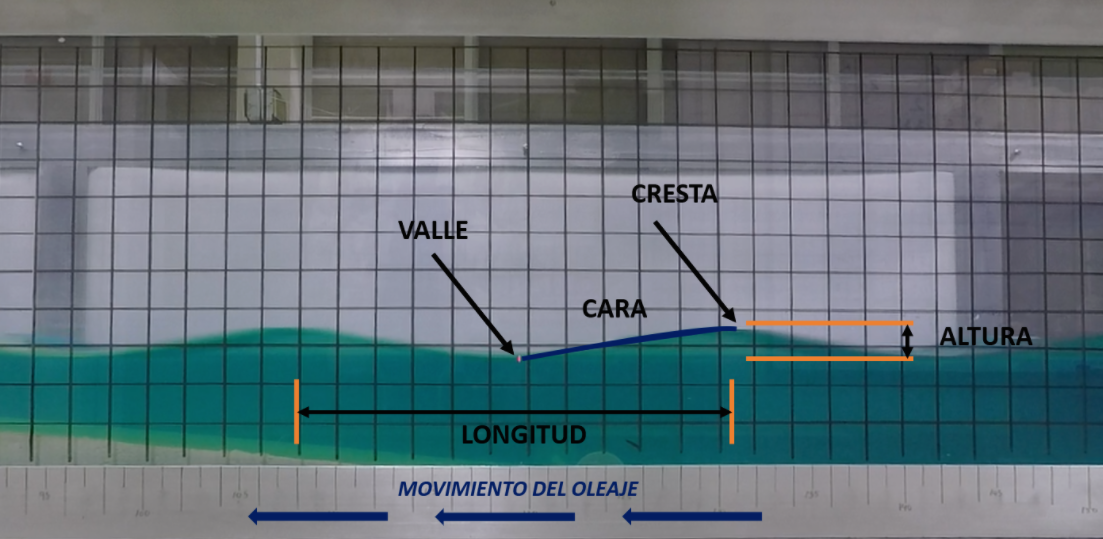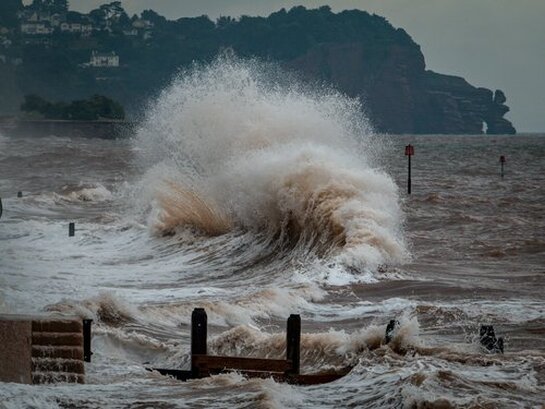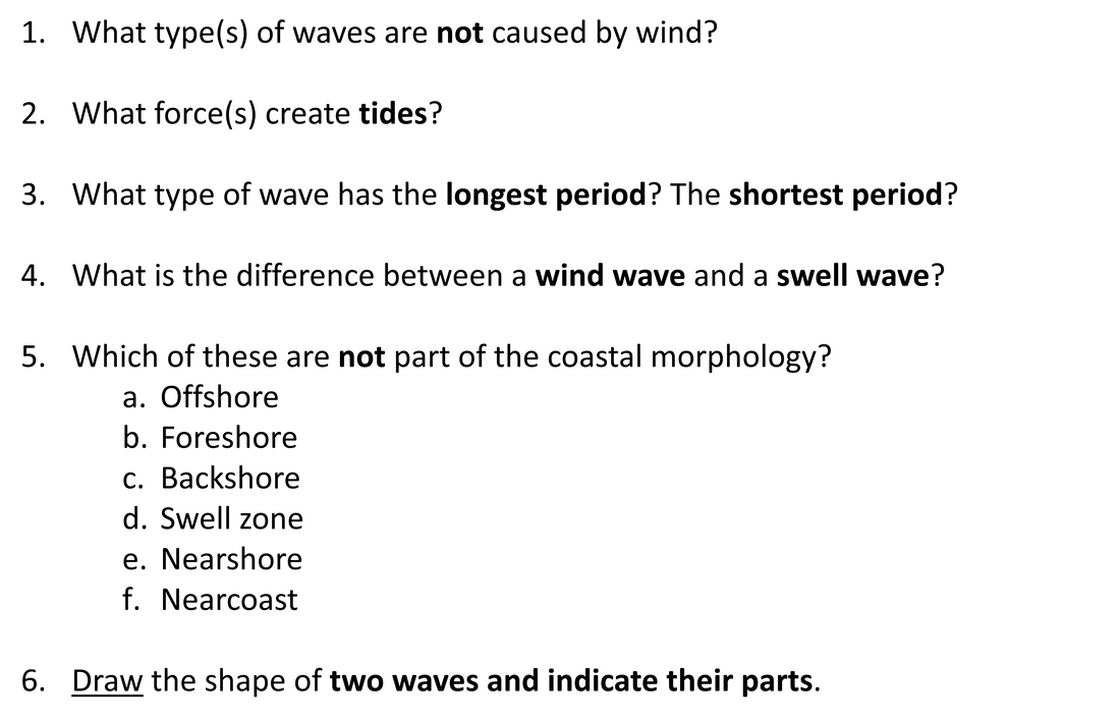OBJECTIVES
- Explain the parts of a wave.
- Simulate different types of waves.
- Demonstrate how waves form and explain their general characteristics.
- Identify the different parts of the coastal area and what happens in each one.
VOCABULARY
- Wave → movement of energy through water; a disturbance in the water that travels from one place to another.
- Crest/Peak → the highest point of a wave.
- Trough → the lowest point of a wave
- Flank → the area between the peak and the valley that faces in the direction of wave movement.
- Height → distance between peak and valley
- Length → distance between the peak (or trough) of two consecutive waves
- Period → the time between when it takes two consecutive wave peaks (or troughs) to pass through the same place.
TYPE OF WAVES
|
How a tsunami wave works | National Oceanography Centre [Photograph]. (2011)
|
THE COAST
- Coastal morphology → study of the shape and structure of coastal systems.
- Coastline → section of land adjacent to the water's edge that extends inland where coastal processes have no effect.
- Coastal area → the areas of land and water adjacent to the shore.
PARTS OF THE COASTAL AREA
- Backshore → the area between where the water level is highest (high tide) and inland at the limit of marine activity; under normal conditions this area is dry; under storm conditions and strong winds, the water level reaches this area.
- Foreshore → the area between where the water level is highest (high tide) and the lowest water level (low tide); an area always covered by waves, commonly referred to as shoreline.
- Nearshore → the area between the lowest water level and the point where waves do not affect the surrounding land (or bottom); the area where the waves break.
- Offshore → area after the point where the waves stop affecting the seabed.
DEMONSTRATION
The basic and general terminology is defined and presented, both in the laboratory and in the field of coastal study.
It is important to understand this terminology, as it serves as a tool to raise awareness about the situations currently affecting Puerto Rico’s coastal areas.
It is important to understand this terminology, as it serves as a tool to raise awareness about the situations currently affecting Puerto Rico’s coastal areas.
The module is divided into 3 parts:
- Defining and characterizing a wave
- Explaining the characteristics of the different types of waves
- Defining and identifying the areas that give morphology on the coast.
- PRELIMINAR VIDEO. STILL UNDER PRODUCTION. -
KEY POINTS
- A wave has different parts that help determine important characteristics, such as height and period. These are used in the study of the ocean and coasts.
- What determines the type of wave is the way it was created.
- The tide is an extremely long wave that sweeps across the entire planet and causes a change in the water level around the world.






